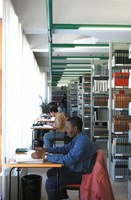 Campbell delivered this message at a plenary lecture given at the World Science Forum in Budapest, Hungary, last week. He later expanded on his comments in an interview with the TWAS editor.
Campbell delivered this message at a plenary lecture given at the World Science Forum in Budapest, Hungary, last week. He later expanded on his comments in an interview with the TWAS editor.
"I am confident that Nature will be here in 10 years' time, but I wouldn't want to venture what it will look like." Change could simply come in the form of an electronic version of the current print edition. The look would remain much the same but most readers would access the content on their computers. "This trend, of course, is already taking place," he noted.
But Campbell also observed that mobile phone technology is expanding rapidly and that other, more exotic technologies that are now on the horizon could quickly emerge. "It's not inconceivable that Nature will be delivered to your iPhone, Blackberry or Kindle in a format that is more compatible with mobile phone technology." Or, in the future, that Nature articles could be read on demand through a "mind-to-material" technology, based on neural prosthetics, which will enable you to request the latest articles in your field and have them delivered directly to your multi-media headset."
But it's not just conventional delivery formats that have been put at risk by the new communication technologies. There are also growing uncertainties about who will prepare and deliver the content and how this might affect what we read. Indeed powerful cross-currents of change are now buffeting conventional methods of finance and encouraging alternative systems of communications.
For example, university library budgets are failing to keep pace with the growth of R&D spending or to match the growth in output in scientific publications. Indeed, as Campbell notes, the proportion of university funds spent on acquiring publications is actually falling.
Second, by delivering content free-of-charge, the web has wreaked havoc on conventional business plans in the mass media. But, Campbell adds, "the science market, while feeling such pressures, is in much better shape because science budgets remain relatively robust and and because people recognize the added value of high-quality magazines and journals."
Third, new sources of information are providing alternative ways for readers to acquire information about scientific research and policies. Blogs, for example, have been transformed from a novelty to a mainstay of science information in less than five years.
Campbell cited a number of blogs that offer valuable insights for those interested in the issues that they are examining. There is, for example, Real Climate (realclimate.org) that looks at climate issues, Cosmic Variance (cosmicvariance.blogspot.com) that explores the field of cosmology, and Effect Measure (scienceblogs.com/effectmeasure) that is engaged in public health debates.
In addition, several universities have launched independent websites offering the public informative analyses of critical science-based issues. For example, Yale University's Environment 360 (e360.yale.edu) and Princeton University's Climate Central (climatecentral.org) are web-based sources of serious news and commentaries written by experienced journalists and researchers. While not to be confused with blogs, these websites nevertheless represent new communication outlets sponsored by nonconventional sources.
Campbell asserts that scientists who have the interest and talent to blog should be encouraged to do so. "Surveys," he says, "show that the public has more confidence in scientists than it does in journalists." Therefore scientists who have something to say and can say it in an appealing style will likely be listened to. And, as Campbell also observes, there are a large number of stakeholders in addition to the general public who are interested in scientific information – for example, policy makers and their staff, nongovernmental organizations, bilateral and international organizations, foundations and corporations. "That means the blogs don't necessarily have to be directed to a broad public to be successful."
As Campbell also notes, bloggers are likely to prove useful to journalists. "Excellent bloggers serve as excellent sources of information that can be easily and quickly accessed," he says. "Yet," he is quick to add, "bloggers also enable readers to bypass conventional media sources. Consequently, the best of them are in direct competition with journalists.
When a profession experiences the dramatic changes that science communications has experienced over the past decade, uncertainty is bound to follow. It is therefore not surprising to see alternative delivery and financial systems emerge to meet the new challenges posed by rapidly advancing technologies and the changing behaviour of readers.
But Campbell also notes that the elements likely to spell success for science communications in the future may ultimately be remarkably similar to those of the past. Timeliness, relevance, reliability and readability may never go out a fashion.
Under this scenario, it's not the delivery system or the source of the information that will define success. Rather it will be what is being said and how it is being presented. From this perspective, the new age of scientific communication may not be that different from the old.

